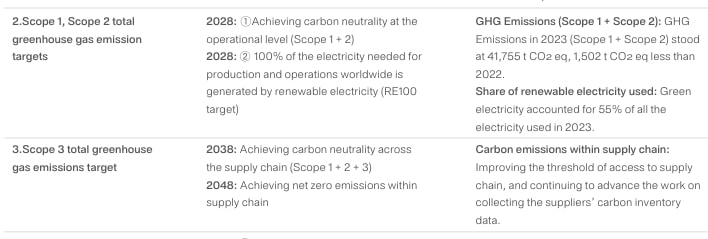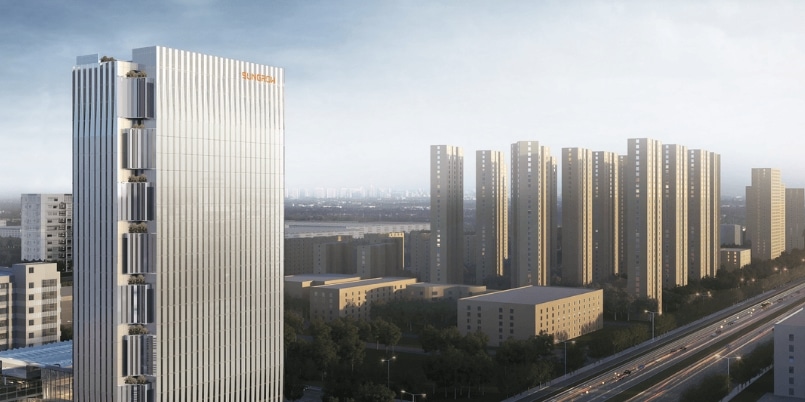Sungrow Power Supply, a Chinese photovoltaic inverter manufacturing giant recently announced to partner with Saudi Arabia’s Algihaz Holding for a massive energy storage project. In this project, Sungrow will build a 7.8 GW energy storage system to boost Saudi Arabia’s power grid stability and reliability. Media reports that this will be the largest off-grid energy storage project in the Middle East.
Sungrow’s Ambitious Timeline: Powering Saudi Vision 2030
Saudi Arabia, the world’s largest crude oil exporter, is committed to expanding its renewable energy sector under Crown Prince Muhammad bin Salman bin Abdel Aziz Al Saud’s Vision 2030 plan proposed in 2016. By 2030, Saudi Arabia aims for solar and wind energy to make up 50% of its energy mix, totaling 58.7 GWh.
Sungrow has outlined the project timeline and many other significant attributes. It will span three sites in Najran, Madaya, and Khamis Mushait of Saudi Arabia comprising ~ 7.8 million battery cells.
Furthermore, the project is intended to last more than 15 years, with prominent challenges including climatic conditions, massive scale, critical logistics, and tight delivery schedules. Product delivery will start this year, with a full grid connection expected to be completed by next year.
Sungrow’s representative on addressing some leading media agencies noted that the company will deliver over 1,500 units of its latest Power Titan 2.0 liquid-cooled storage system. The integrated AC storage design and high energy density can reduce operation area by 55%. Furthermore, Sungrow’s preliminary technical and financial involvement will ensure on-time on-site installation and grid connection, meeting all deadlines.
For operations and maintenance, it will deploy an intelligent energy management system (EMS). This modern technology will monitor real-time levels and ensure safety and efficacy during production. However, neither of the parties disclosed the deal value.
Sungrow Charging toward Net-Zero
The 2023 sustainability report reveals,
“Sungrow has pledged to achieve carbon neutrality on the operational level by 2028, carbon neutrality across the supply chain by 2038, and net zero emissions across the supply chain by 2048.”
Renewables and Revenue
They offer solutions for utility-scale, commercial, industrial, and residential applications, including floating PV plants, NEV driving solutions, EV charging, and renewable hydrogen production.
The power titan installed rooftop PV power stations with a total capacity of nearly 13 MW. This saved over 1,300 MWh of electricity annually and raised green electricity consumption to 55%. They reduced energy consumption per unit product by 6.8% compared to 2020.
Sungrow’s operating revenue surged by 79.5% in 2023, reaching $10.2 billion. Meanwhile, its net profit attributable to shareholders soared by 162.7% to $1.3 billion.
Carbon Footprint:
For 2023: The proportion of green electricity use reached 55% in 2023. Greenhouse gas emissions (scope 1 and scope 2) were reduced to 41,755 tons of CO equivalent, which is a decrease of 1,502 tons compared to 2022.

Algihaz Holding: Innovating for Vision 2030’s Energy Goals
Algihaz Holding, a Saudi company with a diverse portfolio, operates primarily in the power and energy sector, using both conventional and renewable sources.
Like Sungrow, Algihaz is actively driving the energy transition as its commitment to Saudi Vision 2030. The company invests in innovative projects to deliver solutions across the Arab Kingdom and globally. Its partnership with Sungrow exemplifies this commitment.
Middle East’s Renewable Energy Scenario
Saudi Arabia is actively transitioning from fossil fuels to renewable energy as part of its Vision 2030 initiative. A few years back, Saudi Aramco’s collaboration with Huawei, focused on integrating advanced technologies to enhance the efficiency and sustainability of energy production. The news of Huawei constructing the world’s second-largest off-grid battery energy storage project in Saudi Arabia has made headlines recently. This project has now achieved an energy storage capacity of 1.3 GWh.

Overall, the Middle East’s renewable energy landscape looks promising in the coming years, with global companies eager to invest. Furthermore, China’s leading PV inverter company, Sungrow exploring the Saudi market, which will open numerous opportunities for the future.
- FURTHER READING: Xpansiv Chosen To Open Carbon Credit Exchange in Saudi Arabia


